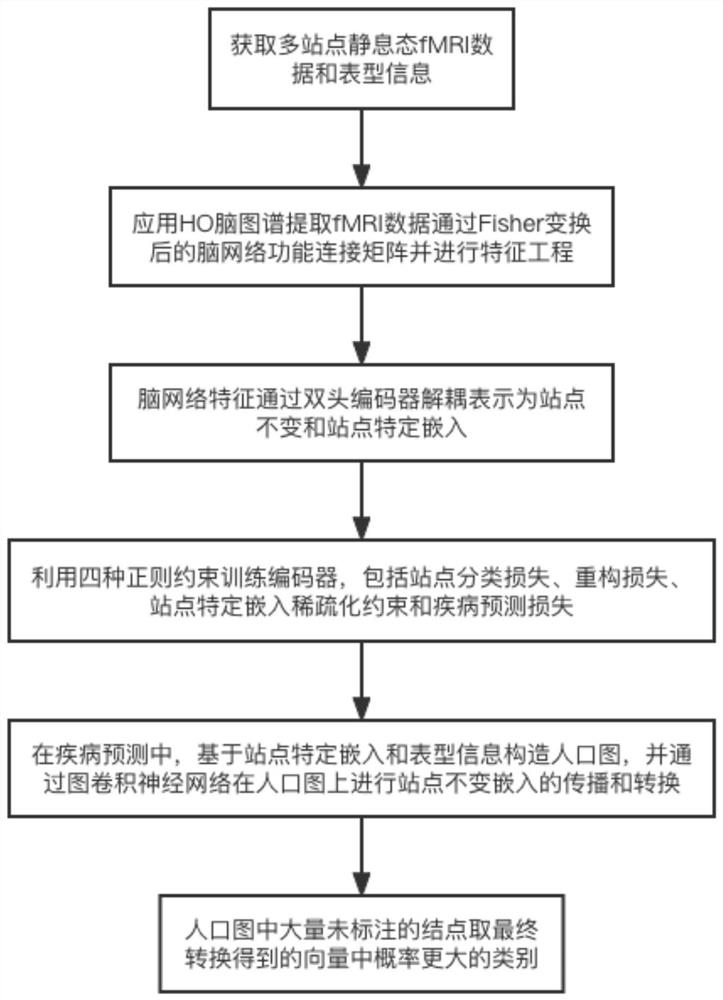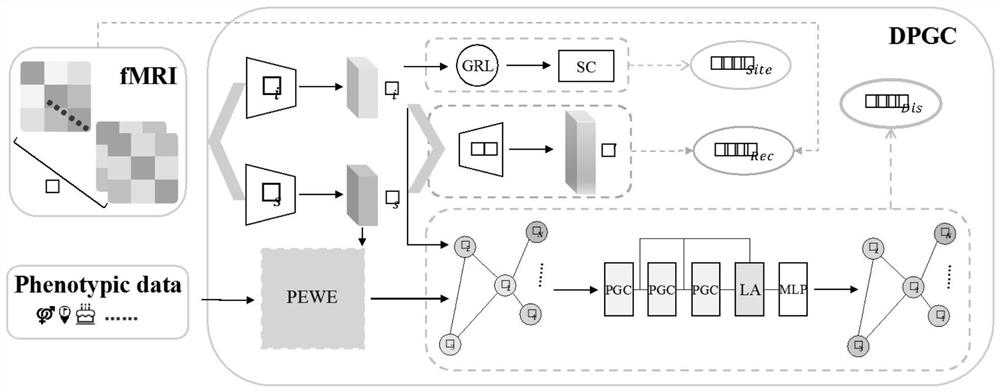Method for removing multi-site functional magnetic resonance imaging heterogeneity for predicting diseases
A functional magnetic resonance and multi-site technology, applied in neural learning methods, biological neural network models, medical informatics, etc., to achieve strong effectiveness, save manpower and time, and improve work efficiency
- Summary
- Abstract
- Description
- Claims
- Application Information
AI Technical Summary
Problems solved by technology
Method used
Image
Examples
Embodiment Construction
[0034] The present invention will be further described in detail below by taking the prediction of mental illness as an example.
[0035] see Figure 1 to Figure 2 The present invention firstly applies the HO brain atlas to the multi-site resting-state fMRI data to extract the brain network functional connection matrix after Fisher transformation and performs feature engineering, and secondly, the brain network features are decoupled by the double-head encoder and expressed as site-invariant and site-specific embeddings, and train the encoder with four regularization constraints including site classification loss, reconstruction loss, site-specific embedding sparsification constraint, and disease prediction loss. Among them, in the process of disease prediction, a population map is constructed based on site-specific embedding and phenotype information, and the site-invariant embedding is propagated and transformed on the population map through a graph convolutional neural netw...
PUM
 Login to View More
Login to View More Abstract
Description
Claims
Application Information
 Login to View More
Login to View More - Generate Ideas
- Intellectual Property
- Life Sciences
- Materials
- Tech Scout
- Unparalleled Data Quality
- Higher Quality Content
- 60% Fewer Hallucinations
Browse by: Latest US Patents, China's latest patents, Technical Efficacy Thesaurus, Application Domain, Technology Topic, Popular Technical Reports.
© 2025 PatSnap. All rights reserved.Legal|Privacy policy|Modern Slavery Act Transparency Statement|Sitemap|About US| Contact US: help@patsnap.com



